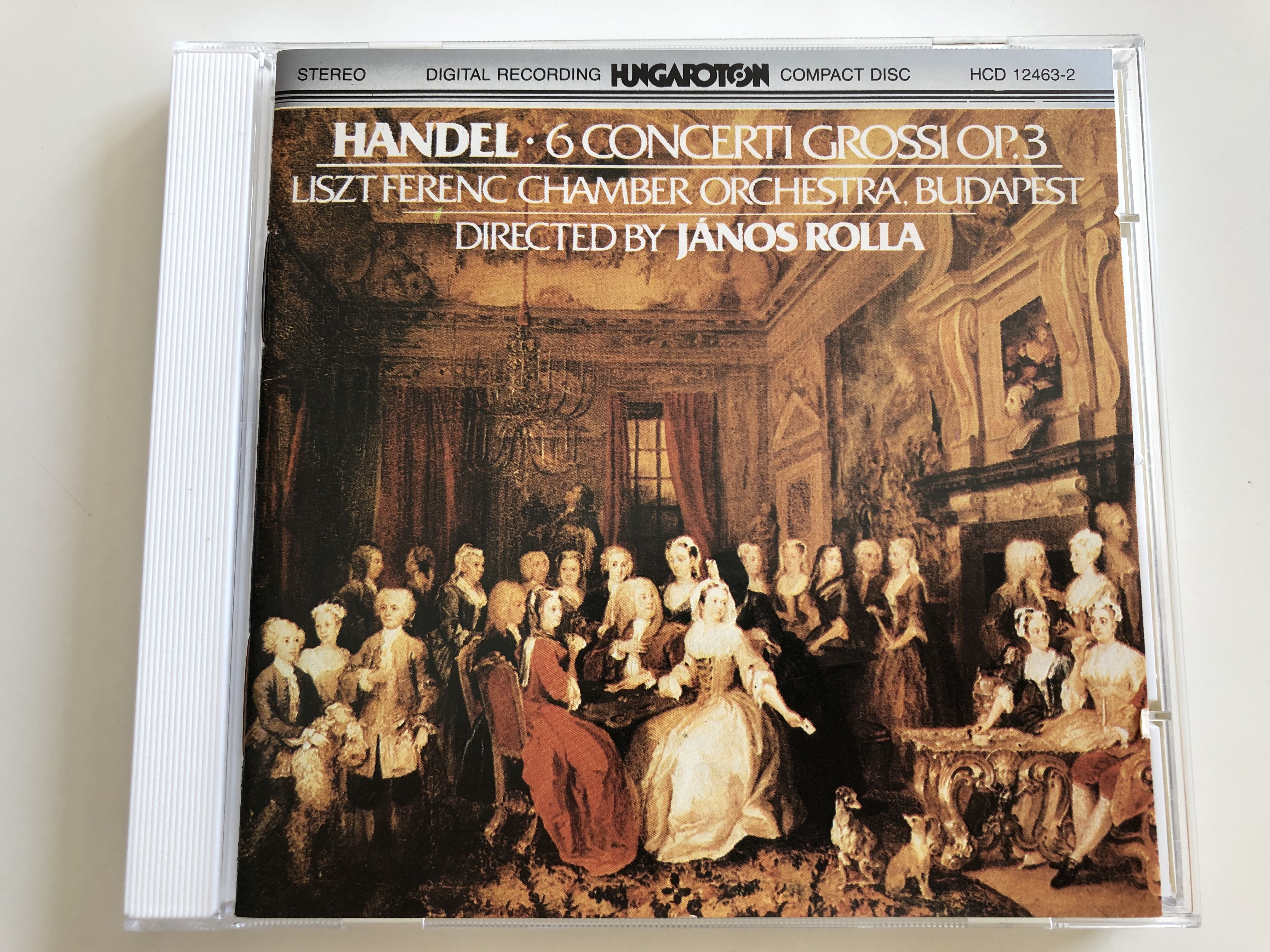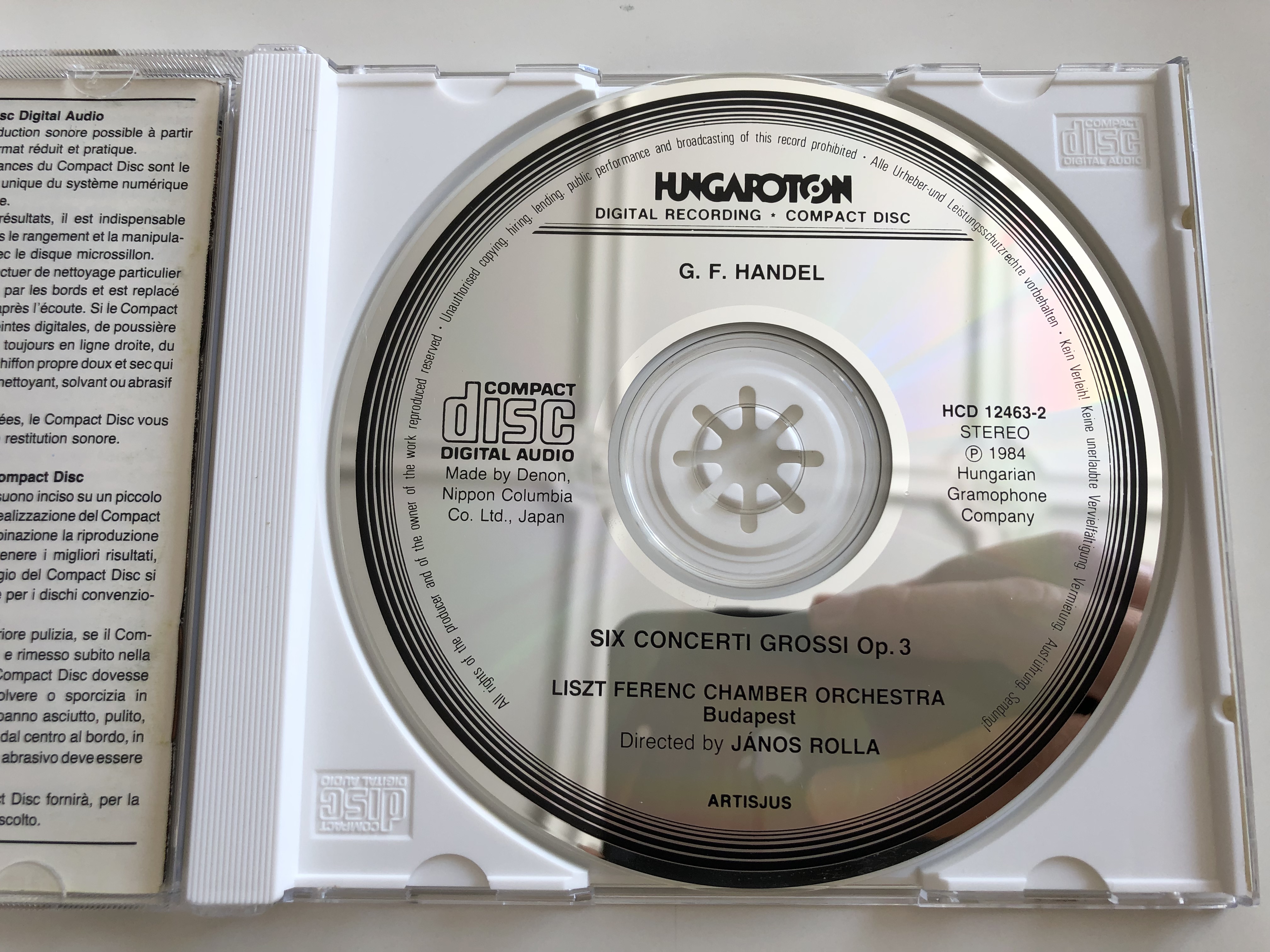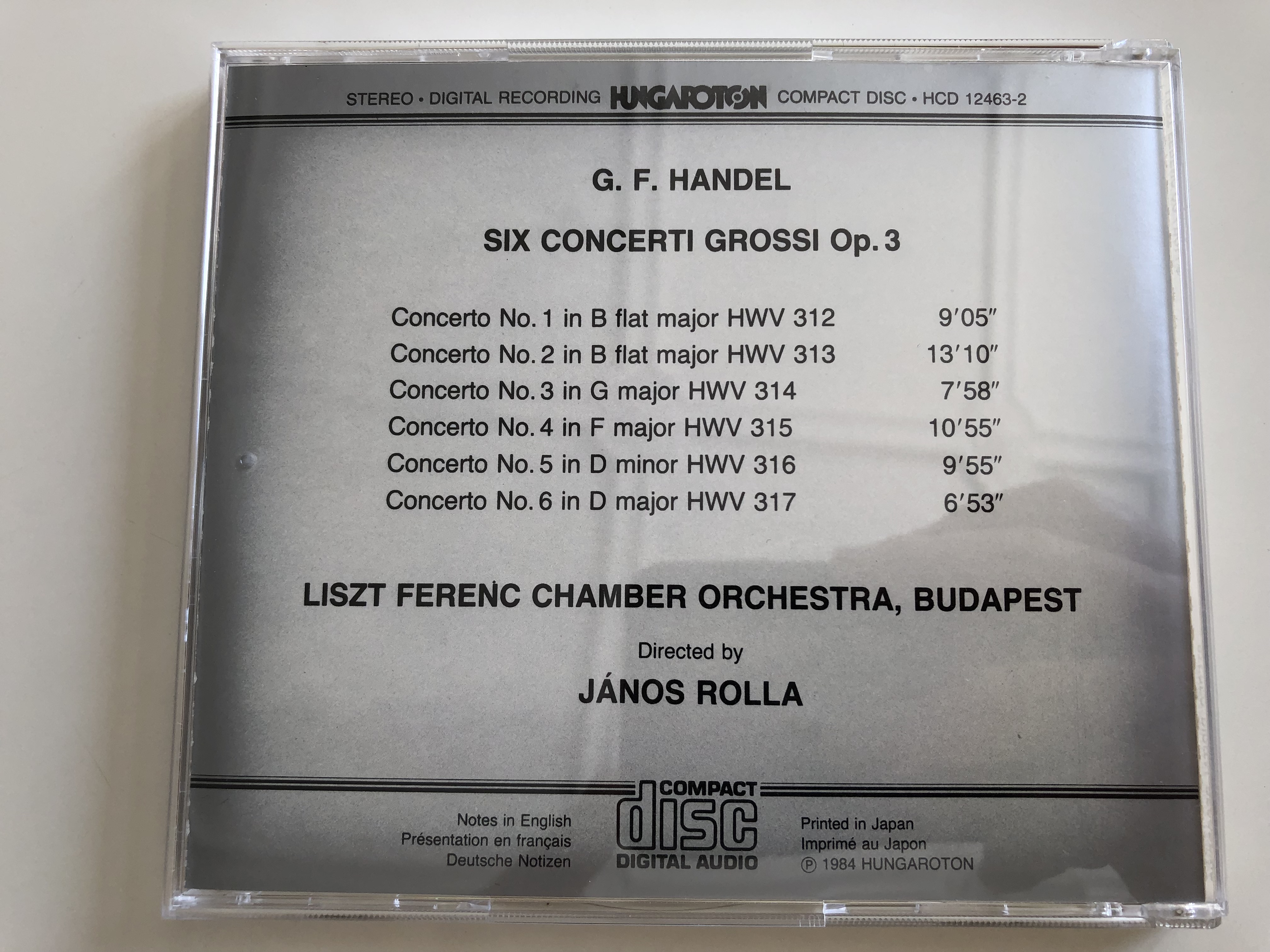Description
G. F. Handel - 6 Concerti Grossi From Op.3 / Liszt Ferenc Chamber Orchestra, Budapest / Conducted by János Rolla / Hungaroton Audio CD 1984
George Frideric (or Frederick) Handel
HCD 12463-2
MADE IN HUNGARY
Tracklist:
| 1 | Concerto No. 1 In B Flat Major HWV 312 | 9:05 |
| 2 | Concerto No. 2 In B Flat Major HWV 313 | 13:10 |
| 3 | Concerto No. 1 In G Major HWV 314 | 7:58 |
| 4 | Concerto No. 1 In F Major HWV 315 | 10:55 |
| 5 | Concerto No. 5 In D Minor HWV 316 | 9:55 |
| 6 | Concerto No. 6 In D Major HWV 317 | 6:53 |
- Composed By – Handel
- Directed By – János Rolla
- Orchestra – Liszt Ferenc Chamber Orchestra
The structure of Op. 3 is somewhat unusual. The six concertos have anything between two and five movements, but only one of them contains the usual four movements. Only occasionally are the instrumental forces set in the traditional concerto grosso manner: a tutti group and a contrasting, soloistic concertino group. However, the concertos are filled with virtuoso solo passages for both the strings and the woodwinds, thus maintaining the form of the concerto grosso despite the lack of traditional contrasting forces.
Concerto Grosso in B♭ major, Op. 3, No. 1 – HWV 312
The first and probably earliest concerto of the set is scored for two recorders, two oboes, two bassoons, strings (with divided viola), and continuo.[1] It is unusual in that only its first movement is in the tonic key of B♭ major—the other two are in the relative minor, G minor.
- Allegro
- Largo
- Allegro
Concerto Grosso in B♭ major, Op. 3, No. 2 – HWV 313
The second concerto contains four movements in B♭ major and one (the second) in G minor. The opening movement of the five-movement concerto bears a close relationship to Handel's Brockes Passion of 1716. Unusually, two dance movements, a minuet, and a gavotte complete the concerto. The final gavotte bears a close resemblance to "The King Shall Rejoice" from Handel's Coronation Anthems. The concerto is scored for two oboes, one bassoon, strings, and continuo.
- Vivace
- Largo
- Allegro
- Moderato
- Allegro
Concerto Grosso in G major, Op. 3, No. 3 – HWV 314
The third concerto is again in three movements (the opening Largo is too brief to be classified as a movement). There is little doubt that this concerto was compiled by Walsh from a number of pieces by Handel. The concerto is scored for one oboe (can also be replaced by flute), one bassoon, strings, and continuo.
- Largo, e staccato — Allegro
- Andante
- Allegro
Concerto Grosso in F major, Op. 3, No. 4 – HWV 315
The fourth concerto is the only piece in the opus that follow a four movement framework. Although the layout of this work does not reflect the typical concerto grosso as the music was pulled straight from the 1716 overture to the 1715 opera Amadigi di Gaula, the piece uniquely displays many aspects of Handel's concerto grosso style. The piece is scored for two oboes, one bassoon, strings, and continuo.
- Largo
- Andante
- Allegro
- Allegro
Walsh also published a 'No. 4b' concerto erroneously under the name of Handel but it was withdrawn a few months later, possibly at Handel's request.
Concerto Grosso in D minor, Op. 3, No. 5 – HWV 316
Despite lack of division into tutti and concertino and the addition of an extra allegro movement at the very end, the fifth concerto follows the traditional Italian model most closely of all the Op. 3 works. Walsh at first only published the first two movements, but because the work had already been known in its entirety, it is probable that Handel requested it be published in full. The piece is scored for two oboes (originally one), one bassoon, strings, and continuo.
- Largo
- Fuga, allegro
- Adagio
- Allegro, ma non troppo
- Allegro
Concerto Grosso in D major, Op. 3 No. 6 – HWV 317
The sixth and final concerto has just two movements, the Vivace, whose music is extracted from the 1723 opera Ottone, and the Allegro, which is also Handel's first published piece for organ and orchestra, and is taken from the overture to the 1712 opera Il pastor fido.[2] The piece is scored for two oboes, one bassoon, strings, and continuo. The Allegro of the concerto was publisher Walsh's 'commercial' announcement of the forthcoming edition of Handel's opus 4: a set of organ (or cembalo) concertos.
- Vivace
- Allegro





























